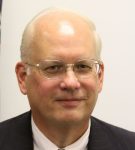It has been 30 years since Ronald Reagan walked off the American political stage; two decades since he was laid to rest in the lengthening shadows of Simi Valley’s “golden hour.”
But with the coming August 30 release of the big budget biographical film Reagan, he will again spring to life, albeit on screen. Americans will have an opportunity to remind themselves of what it was like to have a leader who deployed Irish bonhomie in the service of conservative ideas.
The Thomas Jefferson Institute is offering an opportunity to view the film on August 27, before its official release. Former Heritage Foundation President Ed Feulner will be there to offer his unique “insider perspective” on the Reagan Administration and Reagan the man. Tickets and more information are available here.
Having seen an early, before-special-effects version, the movie is worth watching, watching early, and promoting to friends.
Instead of pounding home a “message,” Reagan tells a story. And what a story it is: Son of an alcoholic father, a movie star whose career dipped so low that at one point he was reduced to selling autographed photos from his home, Governor, and President, the film depicts Reagan’s life from age 11 to age 83.
But it’s not, as scriptwriter Howie Klausner is quick to point out, a hero-worship film: “We wanted to tell the story of a life that constantly reinvented itself, rolled with the punches, failed miserably on occasion, and ultimately realized its purpose at the age of 70. I believe that explains the twinkle in his eye, the smile and wink he would extend to his bitterest rivals, and his iron grip on the things he believed in most ….”
But unlike past Hollywood productions like The Reagan Show, The Reagans, or the cancelled Will Ferrell “comedy” about Reagan and Alzheimers, the team putting together the new movie is unabashed about Reagan’s accomplishments as well as his warts. Based on the book The Crusader: Ronald Reagan and the Fall of Communism, by Paul Kengor, the film stars Dennis Quaid as Reagan and Jon Voight as a fictional KGB agent assigned to follow Reagan’s career.
Directed by Sean McNamara, whose first job as an 18-year-old was doing the sound for the 40th president’s inauguration, the film’s producer is Mark Joseph, a past executive with The Passion of the Christ and The Chronicles of Narnia, among others. To get it right, Joseph says he consulted with or interviewed 50 of Reagan’s aides and friends, including former Secretary of State George Schultz … who was overruled by the Gipper at a critical point in the film (and in real life).
It was a different era, of course. There were divisions, for sure, and political adversaries fought hard. But they also understood each other’s humanity, even in the midst of the contact sport of politics. Reagan never called liberals or Democrats an “enemy”; they were always “adversaries.” “Enemy” was reserved for real enemies: the Soviets.
Instead, Reagan and then-House Speaker Tip O’Neill were famously “two Irishmen having a drink after 6 o’clock.” When Reagan was shot, O’Neill was one of the first visitors at the President’s bedside. There they prayed together, a scene depicted in the film.
That’s harder today because technology and the ability to rapidly destroy reputations, politics and personalities in real time and without thinking did not exist the way it does now. Heck, the internet didn’t happen until 1983. Less than nine percent of American homes had a computer. Steve Jobs was fired from Apple, and Elon Musk was a middle schooler.
That technology has, perhaps, cheapened the quality of our candidates as well. The ability to granularly identify supporters, opponents and undecideds increases the likelihood of political positions based on a Venn diagram of the electorate rather than on solid principles and policies good for the economy, the country, and the individuals in it. There’s no need to think about your answer when you can look it up on Google.
But Reagan, who never had control of Congress, thrived because he understood his principles, stuck with them, and could explain them to those beyond a partisan horizon.
Consider a scene in the film in which the President takes to task his own budget director, David Stockman, when Stockman calls for “revenue enhancements.”
“Is that what you call them these days?” queries Reagan with a smile and a sparkle in his eye. “I may not have gone to a fancy school like you fellas, but at Eureka College they taught us basic economics. That if you tax people less, they’ll have more money to buy things; and if they buy more things businesses will hire more people to make them and more people will have a job.”
Why does it seem hard to imagine today’s candidates explaining a consistent principle so clearly and succinctly?
From communist efforts to take over Hollywood unions to the Soviet downing of KAL-007; from campus unrest, election defeats and victories, his tax cut battle, and Iran-Contra, to his final days on the Reagan Ranch … they’re all covered in Reagan.
Meanwhile, the Left has wasted little time to commence denigration of the film they haven’t seen on social media, part of a decades-long process.
All the more important, then, to introduce new generations to America’s 40th president.
So buy a ticket and see the film … early. Take the children and the grandchildren. There is much for them to learn.
As for those among us who are older and wiser … take the moment to remember another time when the freedom movement was on the ascendency, lift a glass, and dream your old best dreams.

Chris Braunlich arrived in Washington in 1981 as part of the “Reagan Revolution.” He is Senior Advisor to and former president of the Thomas Jefferson Institute for Public Policy. He may be reached at chris@thomasjeffersoninst.org.






